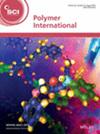Valeriy Demchenko, Yevgen Mamunya, Illia Sytnyk, Maksym Iurzhenko, Igor Krivtsun, Nataliya Rybalchenko, Krystyna Naumenko, Liubov Artiukh, Marek Kowalczuk, Olena Demchenko, Andrii Marynin
求助PDF
{"title":"Fabrication of polylactide composites with silver nanoparticles by sputtering deposition and their antimicrobial and antiviral applications","authors":"Valeriy Demchenko, Yevgen Mamunya, Illia Sytnyk, Maksym Iurzhenko, Igor Krivtsun, Nataliya Rybalchenko, Krystyna Naumenko, Liubov Artiukh, Marek Kowalczuk, Olena Demchenko, Andrii Marynin","doi":"10.1002/pi.6707","DOIUrl":null,"url":null,"abstract":"<p>Silver-containing composites formed by sputtering deposition on the surface of polylactide (PLA) films have been developed; they contain a layer of silver nanoparticles of different thicknesses depending on the deposition time, namely 1, 3 and 5 min. It was found that with a deposition time of 5 min a layer with a thickness of <i>ca</i> 100 nm is formed. The average size of the Ag nanoparticles is 5.9 nm, and the average specific surface area <i>S</i><sub>sp</sub> is 97 m<sup>2</sup> g<sup>−1</sup>. The samples obtained were characterized by wide-angle X-ray scattering, TEM, TGA and DSC and their antimicrobial, antiviral and cytotoxic properties were studied as well. It was found that the thinnest layer of silver (deposited for 1 min) has the greatest effect on the PLA's heat resistance and glass transition temperature. PLA-Ag composites formed by silver sputtering deposition show antimicrobial activity against the studied test cultures of <i>Staphylococcus aureus</i>, <i>Escherichia coli</i> and <i>Pseudomonas aeruginosa</i>, and the activity of the samples increases with increasing duration of silver deposition. PLA-Ag composites formed by silver deposition for 5 min had a weak virucidal effect against herpes simplex virus type 1 and influenza virus type A. Irrespective of the sputtering time of silver the composites obtained were not cytotoxic; at a dilution of 1:10 and more they did not significantly inhibit the viability of MDCK, BHK and Hep-2 cells. © 2025 Society of Chemical Industry.</p>","PeriodicalId":20404,"journal":{"name":"Polymer International","volume":"74 3","pages":"207-216"},"PeriodicalIF":3.6000,"publicationDate":"2025-01-15","publicationTypes":"Journal Article","fieldsOfStudy":null,"isOpenAccess":false,"openAccessPdf":"","citationCount":"0","resultStr":null,"platform":"Semanticscholar","paperid":null,"PeriodicalName":"Polymer International","FirstCategoryId":"92","ListUrlMain":"https://scijournals.onlinelibrary.wiley.com/doi/10.1002/pi.6707","RegionNum":4,"RegionCategory":"化学","ArticlePicture":[],"TitleCN":null,"AbstractTextCN":null,"PMCID":null,"EPubDate":"","PubModel":"","JCR":"Q2","JCRName":"POLYMER SCIENCE","Score":null,"Total":0}
引用次数: 0
引用
批量引用
Abstract
Silver-containing composites formed by sputtering deposition on the surface of polylactide (PLA) films have been developed; they contain a layer of silver nanoparticles of different thicknesses depending on the deposition time, namely 1, 3 and 5 min. It was found that with a deposition time of 5 min a layer with a thickness of ca 100 nm is formed. The average size of the Ag nanoparticles is 5.9 nm, and the average specific surface area S sp is 97 m2 g−1 . The samples obtained were characterized by wide-angle X-ray scattering, TEM, TGA and DSC and their antimicrobial, antiviral and cytotoxic properties were studied as well. It was found that the thinnest layer of silver (deposited for 1 min) has the greatest effect on the PLA's heat resistance and glass transition temperature. PLA-Ag composites formed by silver sputtering deposition show antimicrobial activity against the studied test cultures of Staphylococcus aureus , Escherichia coli and Pseudomonas aeruginosa , and the activity of the samples increases with increasing duration of silver deposition. PLA-Ag composites formed by silver deposition for 5 min had a weak virucidal effect against herpes simplex virus type 1 and influenza virus type A. Irrespective of the sputtering time of silver the composites obtained were not cytotoxic; at a dilution of 1:10 and more they did not significantly inhibit the viability of MDCK, BHK and Hep-2 cells. © 2025 Society of Chemical Industry.




 求助内容:
求助内容: 应助结果提醒方式:
应助结果提醒方式:


